"Maskne" Is a Thing — Here's How to Fight Face Mask Breakouts
So, you made (or bought) your own face mask and have been diligently wearing it for the past month. Now, out of the blue, you're experiencing breakouts in strange new spots.
You're likely dealing with "maskne", the latest not-so-fun term to enter the coronavirus lexicon.
RELATED: Why Having a Proper Skincare Routine Is Extra Important During the Coronavirus Pandemic
As the name suggests, "maskne" is acne brought on by wearing a face mask. This is otherwise known as acne mechanica, a physical type of breakout that results from excessive friction, and rubbing, explains New York City-based dermatologist Dendy Engelman, M.D. (You may have even experienced this from wearing sunglasses in the sweaty summer months.)
"Any friction and irritation can push bacteria into skin, create micro-tears — which allow easier entry for bacteria and dirt — and can lead to inflammation which then drives the acne process," explains dermatologist Tiffany J. Libby, M.D, assistant professor of dermatology at Brown University.
You'll notice these breakouts where the mask sits — the bridge of the nose, chin, and cheeks — and they make take the form of whiteheads, blackheads (if oxidized by the air), or even abrasions and cysts, Dr. Engelman says.
While it's primarily healthcare workers who have been experiencing mask-induced breakouts and skin irritation thus far, now that masks are becoming a part of everyday life for the rest of us, dermatologists are being bombarded with (virtual) appointments for this new skincare woe, Dr. Engelman says.
"I am seeing these issues arise not only with my patients, but with my staff and colleagues, as well," Dr. Libby adds.
RELATED: How Does Teledermatology Work?
While masks already trap humiditiy, dirty, oil, and sweat on a good day, both derms agree our chin, mouth, and nose area are even more susceptible to breakouts as summer approaches.
Luckily, you can make some easy adjustments to your skincare routine to combat mask breakouts and soothe irritation. Ahead, expert advice from dermatologists, and the products to stock up on now.
Wash your face before and after wearing a face mask.
Hopefully, you're taking the time to diligently wash your hands throughout the day — and avoiding touching your face as much as possible. But you should also be sure to wash your face with a gentle cleanser before applying a mask to prevent trapping bacteria under the mask and pushing it further into your skin, Dr. Engelman says.
RELATED: The Best Drugstore Face Washes, According to Dermatologists
"I recommend starting with a benzoyl peroxide cleanser once a day to target bacteria and remove excess oil," Dr. Libby says. "I love Differin Daily Deep Cleanser which has 5% benzoyl peroxide, which is just as effective as [higher concentrations], and gentler."
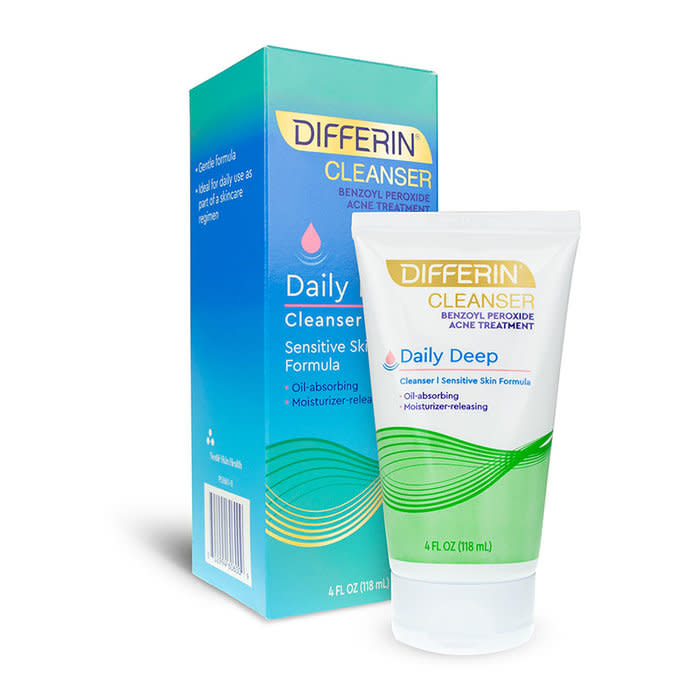
Shop now: $11; target.com
For healthcare workers on the frontline wearing the tightest-fitting masks for many hours of the day, a combination of "maskne" and eczema (which can occur in the forms of irritant or allergic contact dermatitis) is common, and can manifest as dry, itchy skin, Dr. Libby says. If you are experiencing both of these conditions, its important to immediately cleanse your skin after removing your mask and to use a cleanser that won't over-dry or stripping your skin, which can worsen irritation.
Both derms recommend Cetaphil Gentle Skin Cleanser, which can also be used without water. If you have irritated or sensitive skin, gently swipe a cotton round with the cleanser over your skin, Dr. Libby suggests.
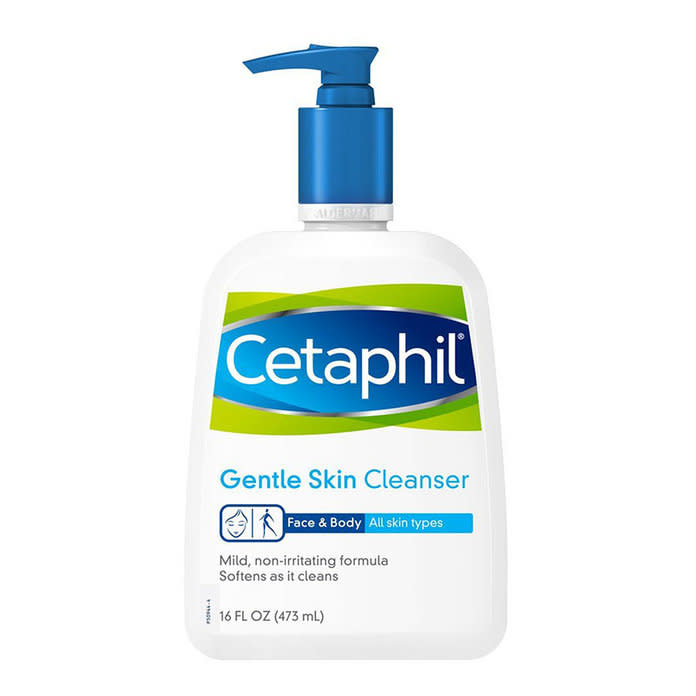
Shop now: $14; ulta.com
Use a chemical exfoliant.
While benzoyl peroxide or salicylic acid spot treatments can help target whiteheads once they are formed, chemical exfoliants, which dissolve dead cells on the skin's surface, are key for preventing mask breakouts from forming in the first place, Dr. Engelman says.
RELATED: Everything You Need to Know About Chemical Exfoliants Before Applying Them to Your Skin
She suggests opting for one with salicylic acid, like Humane Clarifying Toner, once per week to unclog pores, without irritating sensitive skin. (It'll also leave skin softer and brighter in the process.)
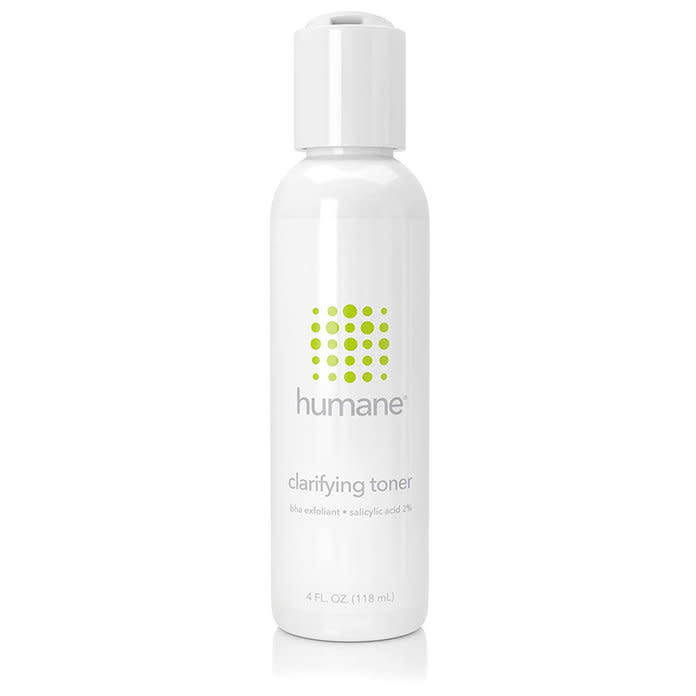
Shop now: $18; amazon.com
Apply a skin-soothing moisturizer.
After cleansing, add moisture back into the skin, without slathering on a heavy cream. "I suggest a gentle, fragrance-free and non-comedogenic moisturizer like Cetaphil Daily Hydrating Lotion, which is formulated with hyaluronic acid to help hydrate, soothe, and restore the skin protective barrier," Dr. Libby says.
For healthcare workers or those experiencing extra dryness and eczema, applying an OTC cortizone cream on a short-term basis is helpful in alleviating skin irritation and calming down inflammation, she adds.
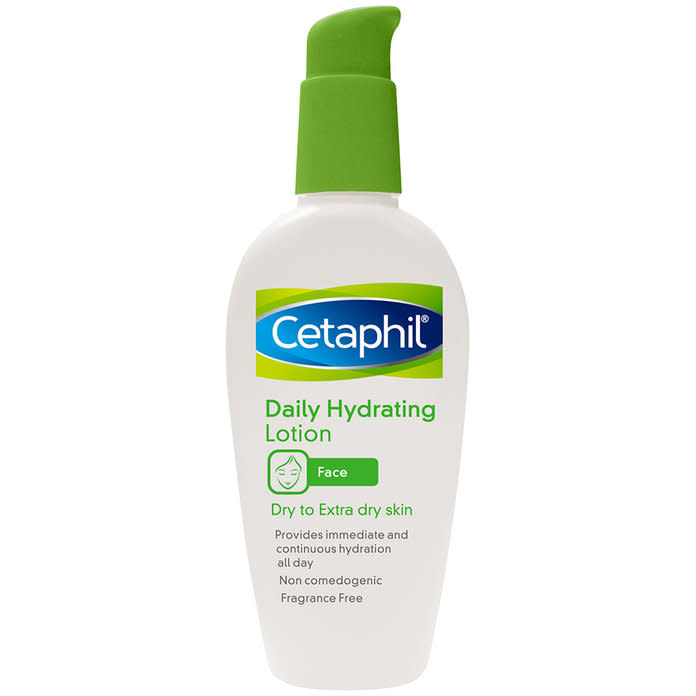
Shop now: $18; ulta.com
Ditch heavy foundations.
Dr. Engelman suggests ditching heavy foundations as we head into warmer months, which will only further trap bacteria in your pores under your mask — the perfect storm for acne.
Instead, opt for a tinted moisturizer, or tinted sunscreen for breakout-friendly SPF protection, like IT Cosmetics Your Skin But Better CC+ Cream SPF 40. More on that below...
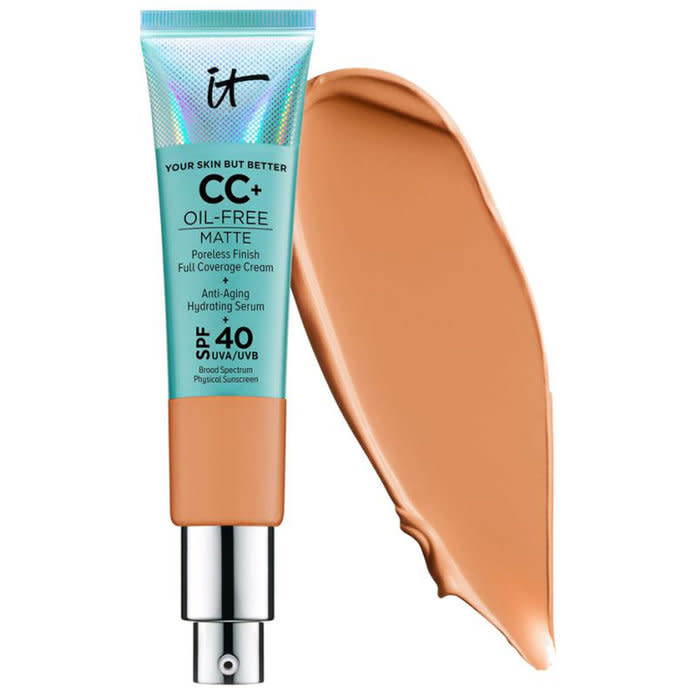
Shop now: $40; sephora.com
But don't forget the SPF.
"Even though our faces will be mostly covered by masks, other areas are still exposed, so it's best to just apply an even layer of SPF as the finishing step to your morning routine," Dr. Libby says. (And FYI, you need to wear sunscreen indoors, too).
Look for non-comedogenic and oil-free options as they work to decrease excess oil that can clog pores and lead to acne. "I like mineral options, as zinc oxide is an anti-irritant and has antimicrobial properties, both which are suitable for acne-prone and sensitive skin types," she adds.
RELATED: The 9 Best Moisturizers With SPF to Protect and Hydrate Your Skin
Create a physical barrier.
After cleansing and moisturizing, layer on a hydrating and occlusive balm, like Glo Skin Beauty Barrier Balm, along the area where the masks sits. This will soothe parched or chapped skin, but also create a barrier to avoid bacteria spreading, Dr. Engelman says.
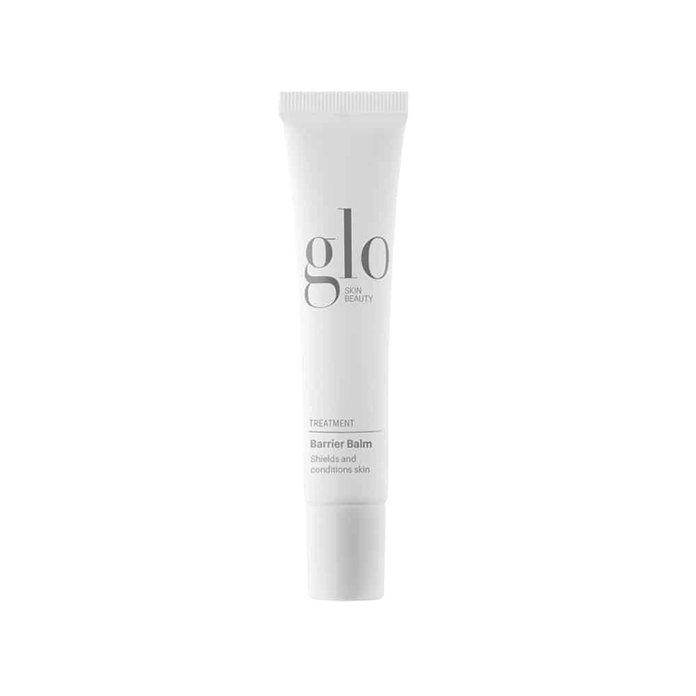
Shop now: $14; amazon.com
Another physical barrier Dr. Libby suggests is silicone tape or Duoderm ($24; amazon.com), again applied to skin where the mask contacts your face and applies the most friction. "Acne patches, like COSRX, are another dual-functioning solution as they apply acne medication to individual lesions throughout the day, while also serving as a physical barrier to the mask," she says.
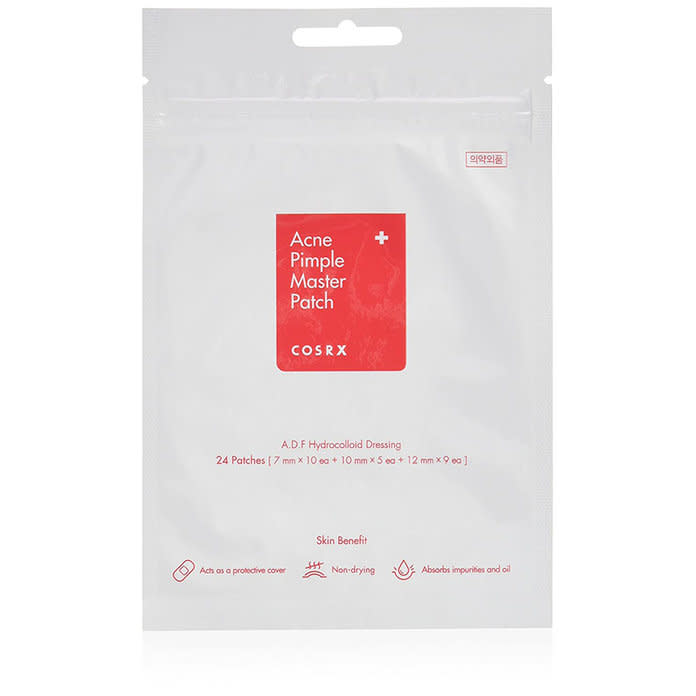
Shop now: $6; ulta.com
Wash your fabric mask every time you wear it.
If you're wearing a fabric face mask, you should be washing it after every. single. time. you wear it. This is important for your health: You don't know what bacteria the mask has come in contact with and don't want germs making their way into your nose or mouth. But it's also helpful for keeping breakouts at bay.
RELATED: How to Clean Your Fabric Face Mask, According to Experts
Bottom line: "Masks, while important for our safety, can trap in humidity, dirt, oil and sweat and — if you're not cleaning them properly or reusing them for prolonged periods of time — this can further exacerbate these symptoms," Dr. Libby says.
That's why it's a smart idea to make or buy a few masks (ideally in a softer fabric, like a silk blend, to reduce friction) so you can easily switch them out and wash them in between uses, Dr. Engelman says.


